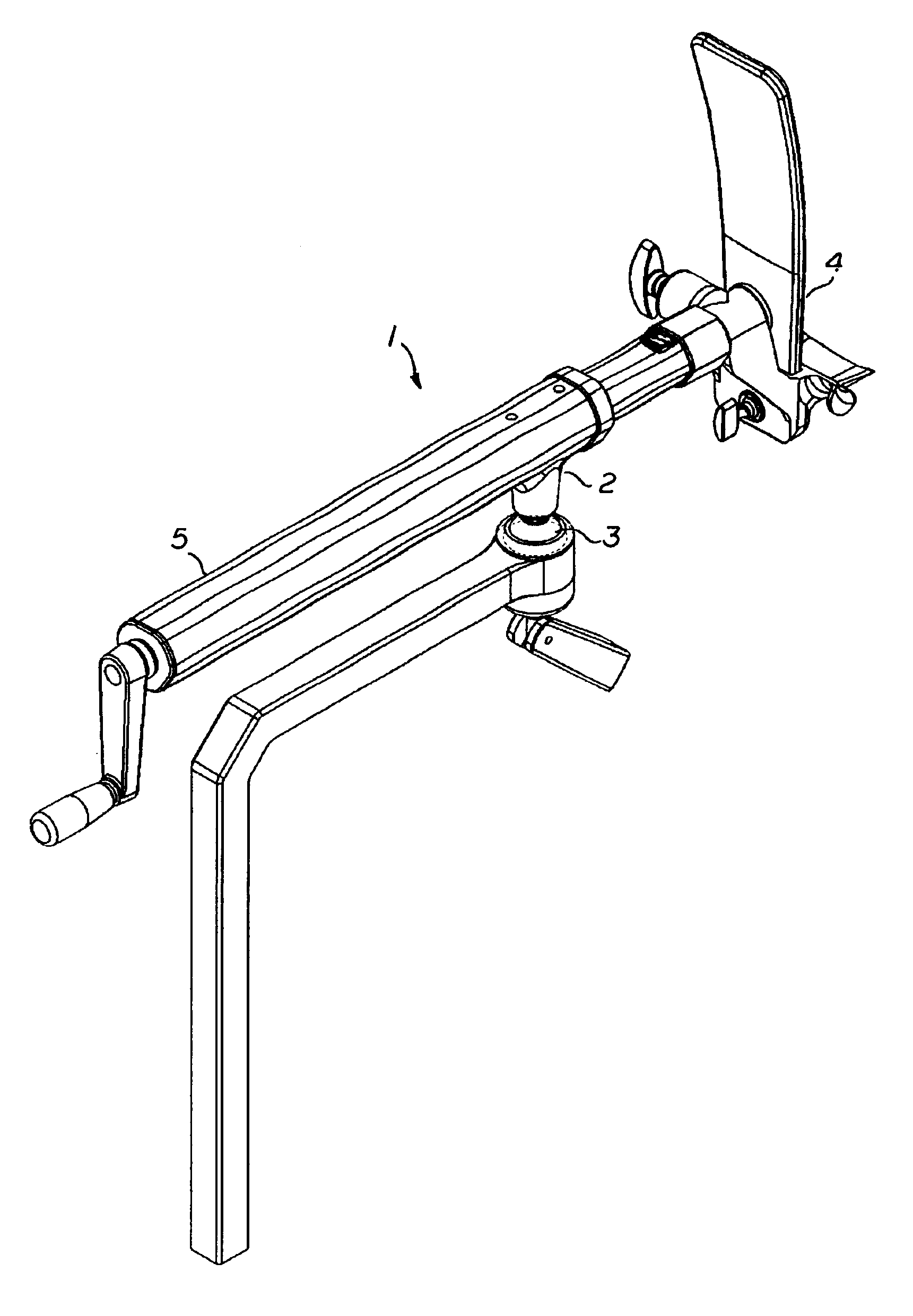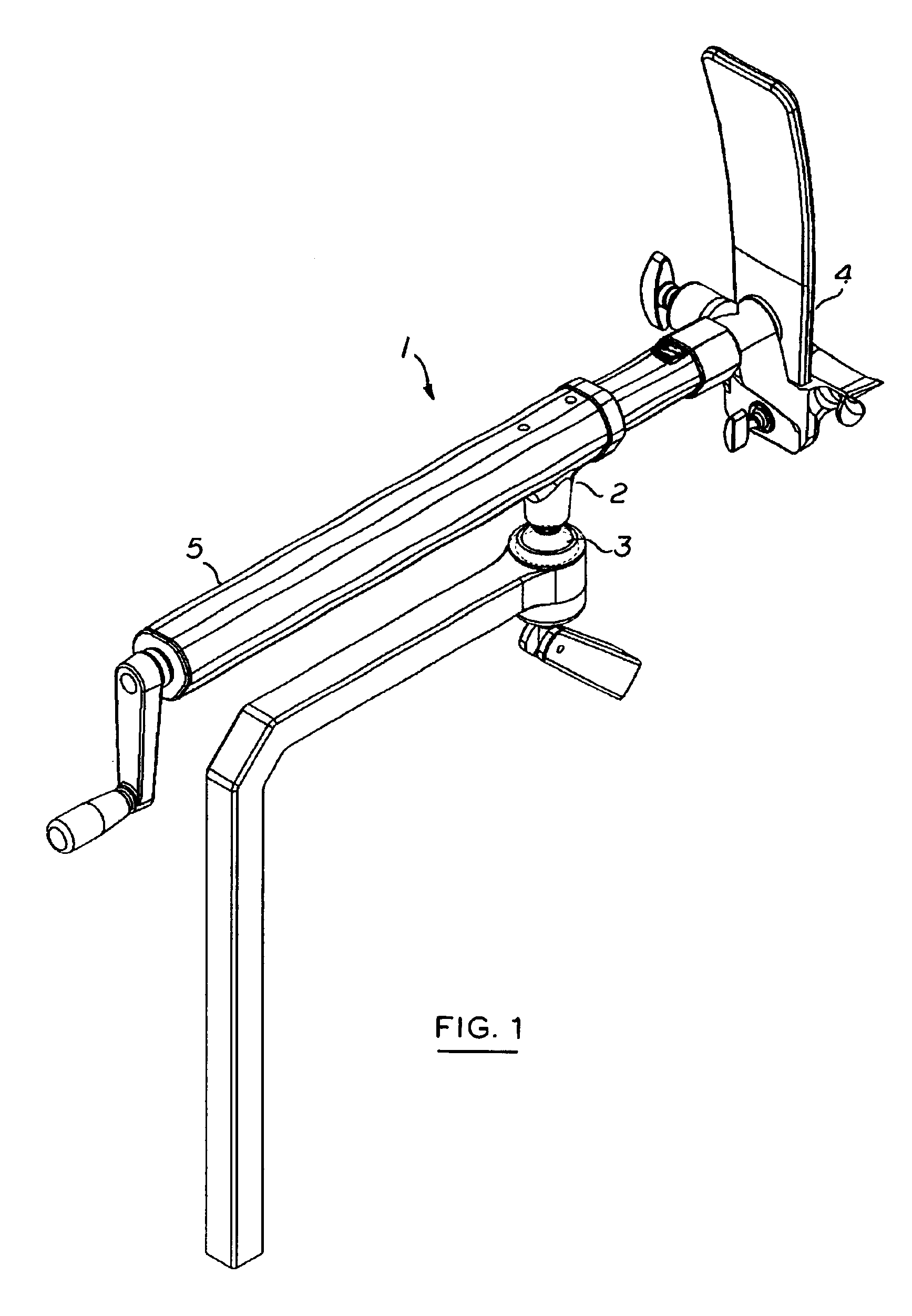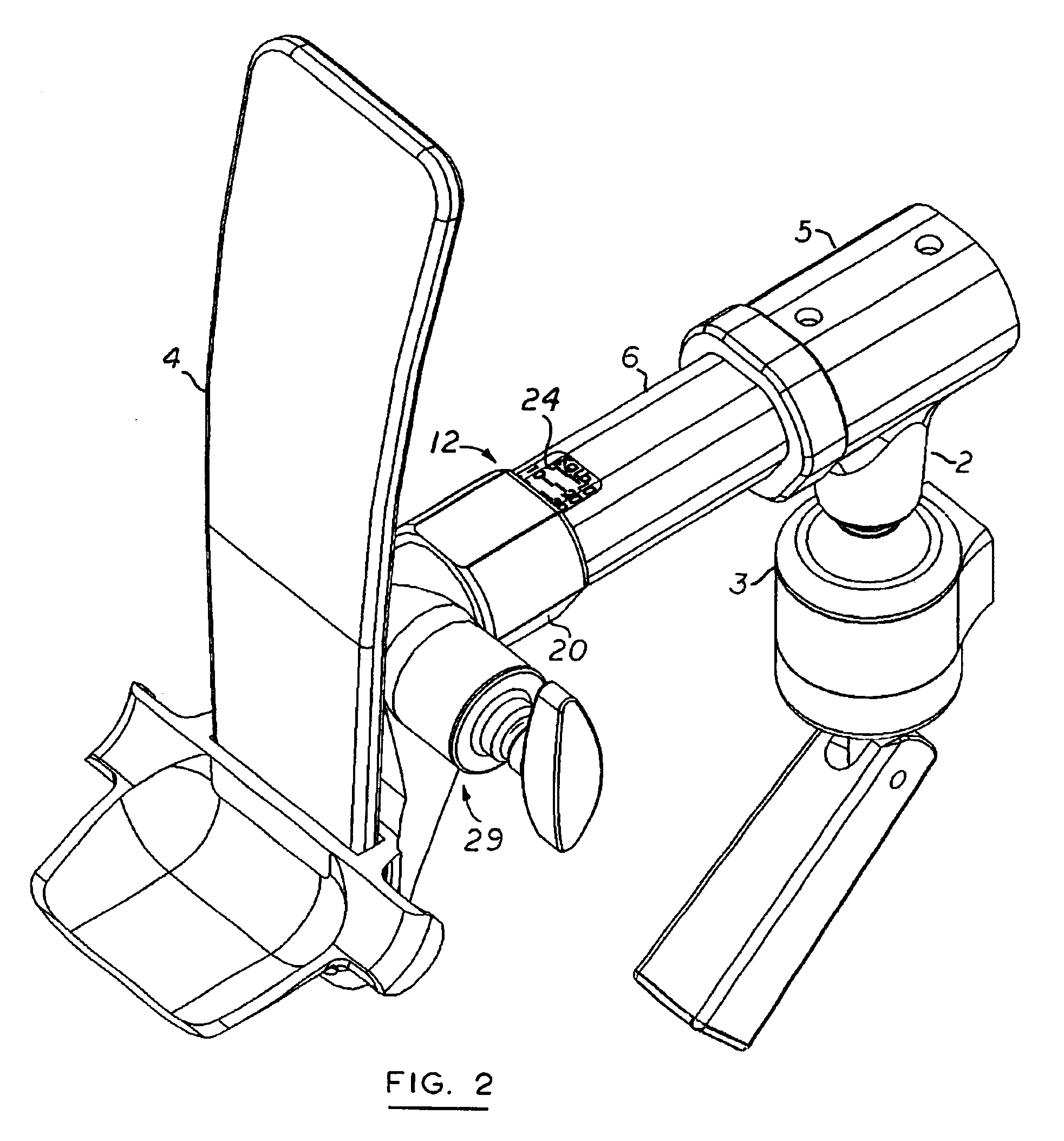Orthopedic traction device
a traction device and orthopedic technology, applied in the field of orthopedic equipment, can solve the problems of affecting the operation of the operating table, requiring very sturdy operating table, and requiring heavy weight, so as to minimize friction between the moving components, facilitate installation, and accurate indication of the traction force
- Summary
- Abstract
- Description
- Claims
- Application Information
AI Technical Summary
Benefits of technology
Problems solved by technology
Method used
Image
Examples
Embodiment Construction
[0014]Referring now to the drawing, there is shown an orthopedic apparatus 1 for applying traction to a patient's body part and more specifically to a patient's arm or leg. The apparatus preferably anchored to an operating table, bed, treatment jig or other stationary structure fixedly supporing the pateint. The attachment is by means of a multi-positonable coupling comprising a bracket 2 terminated by a ball-and-socket assembly 3. At the distal end of the apparatus a a stirrup fixture 4 is configured to securely attach to a boot worn by the patient. Typically, a pair of such traction apparatus would be used to operate on both legs in order to balance the tension applied to the patient's pelvis. The traction mechanism is contained into a first tubular housing 5 secured to the coupling bracket 2 and a more distal second tubular housing 6 concentrically and telescopically engaged into the first.
[0015]The stirrup fixture 4 is mounted at the distal end of a spline shaft 7 slidingly enga...
PUM
 Login to View More
Login to View More Abstract
Description
Claims
Application Information
 Login to View More
Login to View More - R&D
- Intellectual Property
- Life Sciences
- Materials
- Tech Scout
- Unparalleled Data Quality
- Higher Quality Content
- 60% Fewer Hallucinations
Browse by: Latest US Patents, China's latest patents, Technical Efficacy Thesaurus, Application Domain, Technology Topic, Popular Technical Reports.
© 2025 PatSnap. All rights reserved.Legal|Privacy policy|Modern Slavery Act Transparency Statement|Sitemap|About US| Contact US: help@patsnap.com



